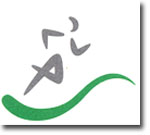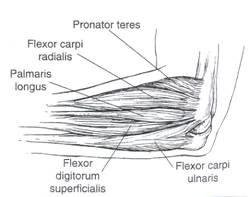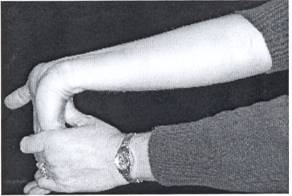

Medial epicondylitis occurs with pain and inflammation on the inside of the elbow where the muscles that flex the wrist attach to the bone. This can occur not only in golfers but in anyone who performs repeated motions of the wrist.
Epicondylitis is caused by repetitive stress and strain to the muscles and tendons that attach the forearm muscles to the elbow. This can include any sudden change in activity level or intensity, or any incorrect grip or grip size in racquet sports. This repetitive stress causes microscopic tearing of the tendon. Blood supply to this area is poor and thus commonly the healing response is limited.

Lateral Epicondylitis can be prevented by frequent stretching and avoiding activities that cause lateral elbow and / or forearm pain. Anti-inflammatory medications can help also at the onset of symptoms.
Commonly this occurs with pain and tenderness on the inside or medial side of the elbow, pain or weakness with gripping or twisting of the wrist, and pain with lifting objects.
Initially treatment consists of anti-inflammatory medication and a stretching and strengthening program. Stretching is a key component in treating epicondylitis. Each stretch should be held for at least 10 seconds, then relax the arm and repeat up to several times a day and in between activities. Minimally 3 sets of 20 repetitions should be performed.
Strengthening exercises will also help. While doing any strengthening, exercises should always be pain free and done with a light weight and at least 3 sets of 20 repetitions.
If symptoms continue after a trial of stretching and strengthening, patients may benefit from a cortisone injection. Cortisone acts by decreasing inflammation and increasing blood flow to the area which aids in healing.
Most patients feel relief after one injection, but up to three cortisone injections over a period of time may be given.

If stretching and strengthening, anti- inflammatory medication, and cortisone injections do not relieve symptoms that surgery is an option. Through a small incision over the bony prominence on the inside of the elbow the base of the diseased tendon is removed and then normal tendon tissue is used to reattach to the bone.
This is an outpatient surgery.
Most patients are able to relieve pain with a stretching and strengthening program, and possibly a cortisone injection or two. However, even those patients who are not able to improve with nonsurgical treatment should expect full recovery after surgery.





